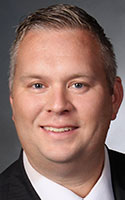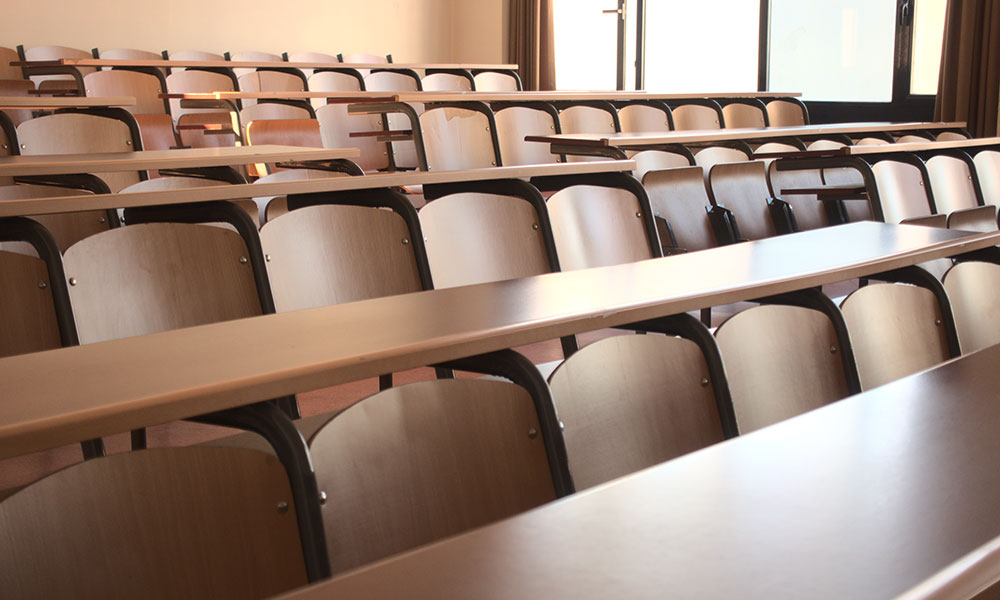For the most part, CNY colleges have weathered the financial woes brought by the pandemic
By Deborah Jeanne Sergeant

Like many other organizations, the pandemic has caused colleges and universities to look more closely at their budgets as costs have increased and revenues have dipped or remained stagnant.
Local colleges have instituted hiring freezes, canceled educational trips and winter intercollegiate athletic programs and postponed purchase of expensive equipment, to mention a few of the actions administrators have taken to stay financially viable during the pandemic.
When the pandemic began, Le Moyne College was enjoying solid enrollment and financial security, according to Joe Della Posta, a college representative. Those factors have helped the school weather the pandemic and “deal with the many implications and expenses that have resulted from COVID-19,” Della Posta said. “While we have instituted a hiring freeze and reduced discretionary spending, we didn’t have to cut any programs or student-focused services.”
That is significant, considering schools nationwide — such as Stanford, George Washington University, Brown University, Darthmouth College and many more — have cut between two to 11 sports programs each, according to a story posted on NBC News’ website.
To help address their budget issues, some schools have included dropping academic programs in their budget cuts. One example is the University of Alaska, which eliminated 39 academic departments, saving $4 million, according to the school’s website. For years, the University of Alaska had been experiencing declining grants and enrollment, which the pandemic only exacerbated.
Schools with robust finances and strong enrollment have fared better. Della Posta said the number of Le Moyne’s incoming freshmen in fall 2020 “exceeded our goal for the third consecutive year and we are on track for a similarly strong effort for fall 2021, with applications and deposits ahead of where we stood last year at this time.”
Syracuse University enrollment for fall 2020 was 93.3% of the previous year, which was a record high enrollment. By spring 2021, enrollment increased by 25% or 7,837 students for first year applications for fall 2021, representing a record high for applications received.
“These are really good, confident numbers for this year,” said Chancellor Kent Syverud in a statement. “This is a result of an aggressive and targeted recruitment strategy, particularly early in the process. It also reflects our fall policy to make test scores optional in light of the pandemic’s impact. We are considering extending the test-optional policy for another cycle because testing continues to be highly problematic for high school students in the U.S. and abroad.”
Syverud believes that the slight dip in enrollment in fall 2020 will result in a corresponding decrease in the budget for fiscal 2021; however, considering the significant challenge of the past year, the school is doing well.
“Unlike many of our peers, we were in solid financial footing going into this, and will emerge stronger when it is over,” he said.
In the spring of 2020, SU reduced its budget by 5% through a freeze on new hires and by lowering salaries of those in leadership roles. That allowed the school to cover expenses related to the pandemic. Despite those changes, by the end of the school’s 2020 fiscal year in July, SU had a $5 million deficit, amounting to about three-tenths of 1% of the overall budget. Fewer than three dozen staff members were laid off because of COVID-19 and some others have left because of performance issues, but Syverud said the total is lower than a typical year.
The budget continues to feel the effects of the pandemic in both receivables and payables and will likely experience what Syverud calls a “manageable deficit” in fiscal year 2021.
At SUNY Oswego, no areas of the current budget have been frozen, according to Nicholas Lyons, vice president of administration and finance.
“SUNY Oswego has held open positions vacant to the extent possible to create budgetary savings over the course of the year,” Lyons said. “We have also deferred many equipment purchases originally planned for the current year and have eliminated virtually all travel as many of these activities are being held virtually.”

These savings have certainly helped Oswego avoid cutting any programs. Lyons said that the biggest hit to the current budget has been a decline in residence hall occupancy since some students have chosen to take classes online from home.
Enrollment is a large indicator of a school’s budget health. Lyons said that many students have chosen to put their college career on hold on hopes of later enjoying a more conventional college experience.
“It is too early to forecast fiscal year 2021-22 enrollment, but applications are down across SUNY, especially for the community colleges, which act as feeders to the four-year institutions.”
At Cayuga Community College, for example, enrollment has decreased, according to Brian Durant, president of the college. Some students adjusted to the challenges of virtual learning and others decided to wait. The school’s enrollment projections for the 2021-2022 academic year are not final yet.
“Cayuga is committed to maintaining a responsible budget and fiscal situation while at the same time offering students a strong avenue to continue their education and career training,” Durant said.
The school has reduced spending in response to the uncertainty of the pandemic, reduced enrollment and spending caused by COVID-19. Among those spending cuts were all the winter sports for 2020-2021.
Twenty-six other SUNY community colleges also canceled their winter intercollegiate athletic programs that were identified as high risk for COVID-19 transmission.
Since the 2021-2022 academic year budget is not finalized, Durant did not offer suggestions as to future cuts.
“The uncertainty of the pandemic has complicated the budget process,” he said. “The state, SUNY and its member institutions have all had to accept additional financial responsibilities associated with responding to the pandemic and protecting our employees and students. As much of our revenue comes from New York state, we understand and appreciate the financial challenges facing the state due to the pandemic.
“We are confident the state will continue communicating with us about its budget process, and how this may or may not impact our financial planning. These financial concerns, of course, are all secondary to our concern for the health and safety of our students, employees, and community members.”




